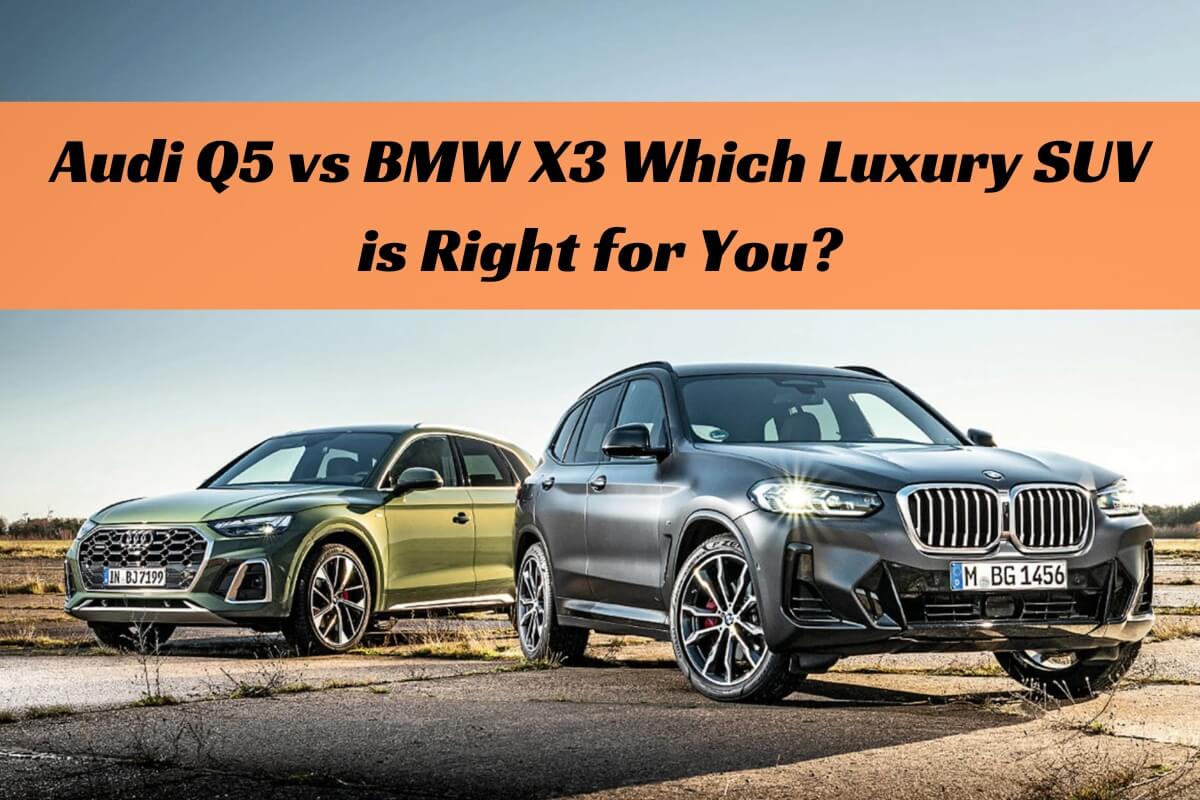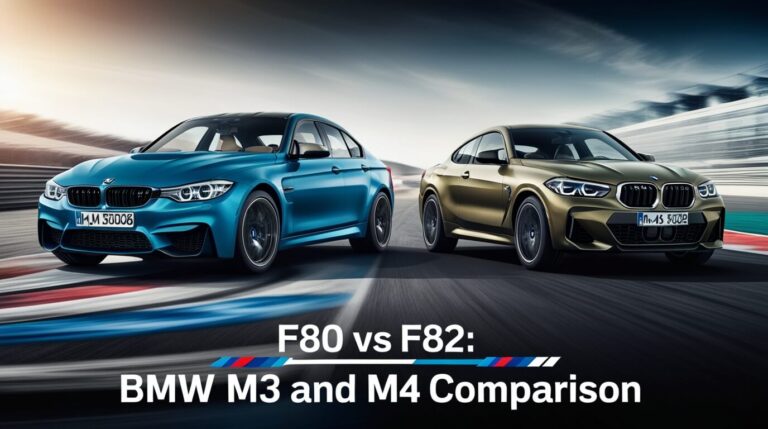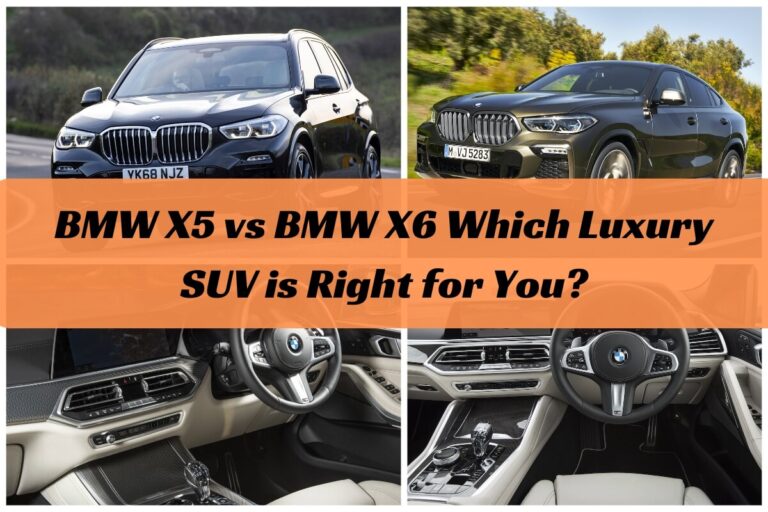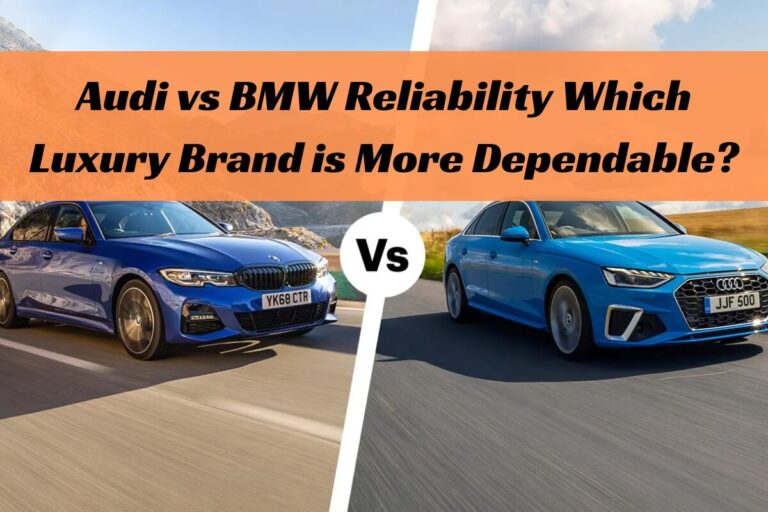
When it comes to premium mid-size SUVs, the Audi Q5 and BMW X3 are two of the most popular and highly acclaimed options on the market. These German automakers have a long-standing reputation for delivering vehicles that combine exceptional performance, luxury, and cutting-edge technology. However, choosing between the two can be a daunting task, especially if you’re unsure which one better aligns with your specific needs and preferences.
Are you torn between the Audi Q5 and BMW X3 for your next luxury SUV purchase? The choice ultimately depends on your priorities, as both models excel in different areas while sharing some similarities.
In this comprehensive guide, we’ll dive deep into the design, performance, interior features, technology, safety ratings, and pricing of the Audi Q5 and BMW X3. By the end, you’ll have a clear understanding of their strengths and weaknesses, allowing you to make an informed decision that aligns with your lifestyle and budget.
Design and Styling
When it comes to exterior design, the Audi Q5 and BMW X3 take slightly different approaches. The Q5 exudes a more aggressive and angular look, with Audi’s signature Singleframe grille, sharp headlights, and sculpted body lines. On the other hand, the X3 has a more understated and sleek appearance, with BMW’s iconic kidney grille, flatter headlights, and a slightly more rounded overall shape.
Stepping inside, both SUVs offer premium cabin materials and meticulous attention to detail. The Q5’s interior is characterized by a clean and minimalist design, with high-quality leather and soft-touch surfaces throughout. The X3, on the other hand, has a more driver-focused cockpit layout, with a slightly busier center console and a greater emphasis on sporty styling cues.
In terms of dimensions, the Q5 is slightly larger than the X3, measuring 184.3 inches in length and 74.5 inches in width, compared to the X3’s 185.9 inches in length and 74.4 inches in width. However, the X3 has a slightly longer wheelbase, which can translate to better ride quality and interior space.
Performance and Driving Dynamics
Both the Audi Q5 and BMW X3 offer a range of engine options, catering to different performance preferences and budgets.
The Q5 is available with a turbocharged 2.0-liter four-cylinder engine that produces 261 horsepower and 273 lb-ft of torque, or a more powerful 3.0-liter V6 that generates 349 horsepower and 369 lb-ft of torque. Audi also offers a plug-in hybrid variant, the Q5 55 TFSI e, which combines a turbocharged 2.0-liter engine with an electric motor for a total output of 362 horsepower and 369 lb-ft of torque.
On the other hand, the BMW X3 comes standard with a turbocharged 2.0-liter four-cylinder engine that produces 248 horsepower and 258 lb-ft of torque. For those seeking more power, there’s the X3 M40i, which packs a turbocharged 3.0-liter inline-six engine that delivers 382 horsepower and 369 lb-ft of torque.
How do the engines compare in terms of power and efficiency?
In terms of power, the BMW X3 M40i and Audi Q5 55 TFSI e have a slight edge over their respective non-performance counterparts. However, when it comes to fuel efficiency, the Q5 55 TFSI e’s plug-in hybrid powertrain gives it a significant advantage, with an EPA-estimated combined fuel economy of up to 50 MPGe.
Which one offers a more engaging driving experience?
While both SUVs are enjoyable to drive, the BMW X3 is often praised for its slightly sharper handling and more engaging driving dynamics. The X3’s rear-biased xDrive all-wheel-drive system and well-tuned suspension provide a more connected and sporty feel, particularly in the high-performance M40i trim.
That said, the Audi Q5 is no slouch when it comes to driving pleasure. Its Quattro all-wheel-drive system and well-balanced chassis deliver a composed and confident ride, with minimal body roll and excellent grip in corners.
Interior Space and Comfort
When it comes to interior space and comfort, both the Audi Q5 and BMW X3 offer ample room for passengers and cargo.
The Q5 boasts 41.7 inches of legroom in the front and 38.8 inches in the rear, while the X3 provides 40.3 inches of front legroom and 36.4 inches in the rear. While the X3 has slightly less legroom overall, it compensates with a marginally longer wheelbase, which can translate to a more spacious-feeling cabin.
In terms of cargo capacity, the Q5 offers 25.9 cubic feet of space behind the rear seats, which expands to 54.1 cubic feet with the rear seats folded down. The X3, on the other hand, provides 28.7 cubic feet of cargo space behind the rear seats and 62.7 cubic feet with the seats folded.
Which SUV has the more spacious and comfortable interior?
While the X3 offers slightly more cargo space, the Q5’s slightly larger dimensions and more generous legroom make it the more spacious option for passengers. However, both SUVs provide ample room for most families and their cargo needs.
When it comes to comfort, both vehicles offer high-quality, well-cushioned seats and a range of upholstery options, including leather and premium materials. Additionally, both manufacturers offer optional packages that can further enhance the cabin experience with features like heated and ventilated seats, massaging functions, and premium audio systems.
Technology and Infotainment Features
In the realm of technology and infotainment, the Audi Q5 and BMW X3 are both well-equipped with the latest features.
The Q5 comes standard with Audi’s MMI infotainment system, which features a 10.1-inch touchscreen display, Apple CarPlay, and Android Auto compatibility. Higher trims and optional packages can add features like a virtual cockpit digital instrument cluster, a Bang & Olufsen premium audio system, and a range of driver assistance technologies.
Similarly, the BMW X3 comes with the brand’s iDrive infotainment system, which includes a 10.25-inch touchscreen display, Apple CarPlay and Android Auto integration, and a range of connected services. Higher trims and packages can add features like a head-up display, a Harman Kardon premium audio system, and advanced driver assistance systems like BMW’s Extended Traffic Jam Assistant.
How do the infotainment systems compare in terms of user-friendliness and features?
Both infotainment systems offer a comprehensive range of features and are generally praised for their user-friendliness and intuitive interfaces. However, some users may find Audi’s MMI system slightly more straightforward and easier to navigate, particularly with the addition of the virtual cockpit digital instrument cluster.
It’s worth noting that both manufacturers offer over-the-air software updates, ensuring that your infotainment system stays up-to-date with the latest features and improvements.
Safety Ratings and Driver Assistance
Safety is a crucial consideration when choosing a new vehicle, and both the Audi Q5 and BMW X3 have earned impressive safety ratings from organizations like the National Highway Traffic Safety Administration (NHTSA) and the Insurance Institute for Highway Safety (IIHS).
The 2023 Audi Q5 received a 5-star overall safety rating from the NHTSA and was named a Top Safety Pick+ by the IIHS, the highest honor awarded by the organization. It comes standard with a range of advanced safety features, including forward collision warning, automatic emergency braking, and lane departure warning.
Similarly, the 2023 BMW X3 earned a 5-star overall safety rating from the NHTSA and was named a Top Safety Pick by the IIHS. It also comes standard with a suite of advanced safety technologies, such as forward collision warning, pedestrian detection, and lane departure warning.
Which model scored better in safety tests and offers more advanced safety features?
While both vehicles performed exceptionally well in safety tests, the Audi Q5 earned the slightly higher Top Safety Pick+ rating from the IIHS, thanks to its superior headlight performance and available intersection assist feature.
In terms of advanced safety features, both SUVs offer a range of optional driver assistance technologies, such as adaptive cruise control, lane-keeping assist, and blind-spot monitoring. However, the Q5 offers some additional advanced features, like Audi’s Traffic Jam Assist, which can take over steering, acceleration, and braking in certain low-speed traffic situations.
Pricing and Value
When it comes to pricing, the Audi Q5 and BMW X3 are similarly positioned in the premium SUV segment, with a range of trim levels and options to cater to different budgets and preferences.
The 2023 Audi Q5 has a starting price of $43,300 for the base Premium trim, while the top-of-the-line Prestige trim starts at $56,800. The plug-in hybrid Q5 55 TFSI e begins at $59,600.
On the other hand, the 2023 BMW X3 has a slightly higher starting price of $45,400 for the base sDrive30i model. The more powerful xDrive30i starts at $47,400, while the high-performance X3 M40i commands a starting price of $59,950.
It’s important to note that both vehicles offer a wide range of optional packages and accessories that can significantly increase the final price tag. Additionally, factors like dealer incentives, financing offers, and negotiation skills can impact the overall cost.
Does the Audi Q5 or BMW X3 offer better value for money?
In terms of value for money, the Audi Q5 tends to offer a slightly better bang for your buck, especially when considering its competitive pricing, impressive standard features, and long-term ownership costs.
The Q5 typically holds its value better than the X3 over time, which can translate to higher resale values and lower depreciation costs. Additionally, Audi’s maintenance and repair costs are generally lower than those of BMW, making the Q5 a more cost-effective choice in the long run.
However, it’s essential to consider your specific needs and priorities when evaluating value. If performance and driving dynamics are at the top of your list, the BMW X3, particularly the M40i trim, may offer better value in terms of its enhanced capabilities.
The Verdict: Audi Q5 vs BMW X3
After an in-depth analysis of the Audi Q5 and BMW X3, it’s clear that both SUVs are excellent choices in the premium mid-size segment. However, each vehicle has its own strengths and weaknesses that may align better with certain buyers’ priorities.
If you prioritize a more spacious and comfortable interior, superior fuel efficiency (especially with the plug-in hybrid variant), and potentially lower long-term ownership costs, the Audi Q5 may be the better choice for you.
On the other hand, if you value a more engaging and sporty driving experience, slightly better cargo capacity, and the prestige of the BMW brand, the X3 could be the ideal pick, particularly in the high-performance M40i trim.
Ultimately, the decision between the Audi Q5 and BMW X3 comes down to your specific needs, preferences, and budget. It’s recommended to test drive both vehicles and carefully evaluate their features, capabilities, and overall value proposition before making your final decision.
In the end, both the Audi Q5 and BMW X3 are excellent luxury SUVs that offer a compelling blend of performance, comfort, technology, and safety. Whichever you choose, you’re sure to enjoy a premium driving experience that meets your expectations.






